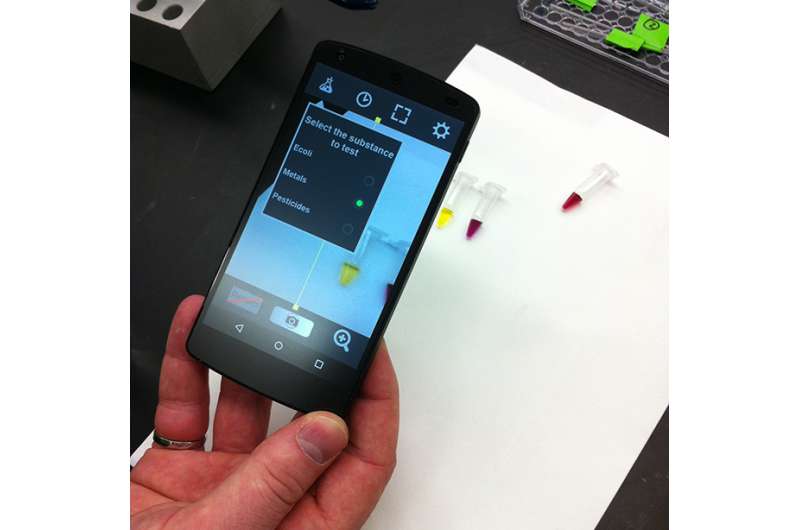In the future, finding clean water might be as easy as snapping a photo

Researchers at McMaster's Biointerfaces Institute have created a mobile app that can determine just how contaminated a sample of water might be.
Using tiny pills containing contaminant-detecting enzymes, users can first determine if their water is clean or not.
If the water is clean, the pills—made of the same material that makes breath-freshening strips melt on your tongue—will change the colour of the water.
If it is contaminated with pesticide, heavy metals or bacteria such as E. coli, it will remain clear.
The app complements the pills—also developed by McMaster researchers—by analyzing a series of photos of the water to determine just how contaminated the water is.
It also allows users to upload information to a central database, allowing others to quickly and easily find hot spots of water contamination.
The Biointerfaces Institute is Canada's first facility for developing unique new surfaces, like pathogen-detecting paper strips, countertops and doorknobs, using high-speed robots and other leading-edge technology.
Investigators at the lab test millions of combinations of biological agents and complex surfaces in pursuit of rapid solutions to the world's most pressing health, safety and other problems.
Provided by McMaster University



















